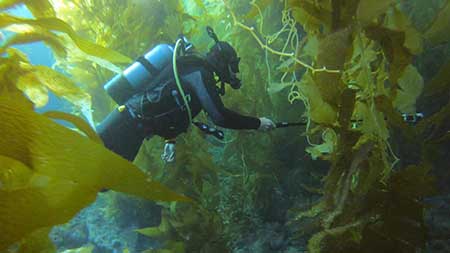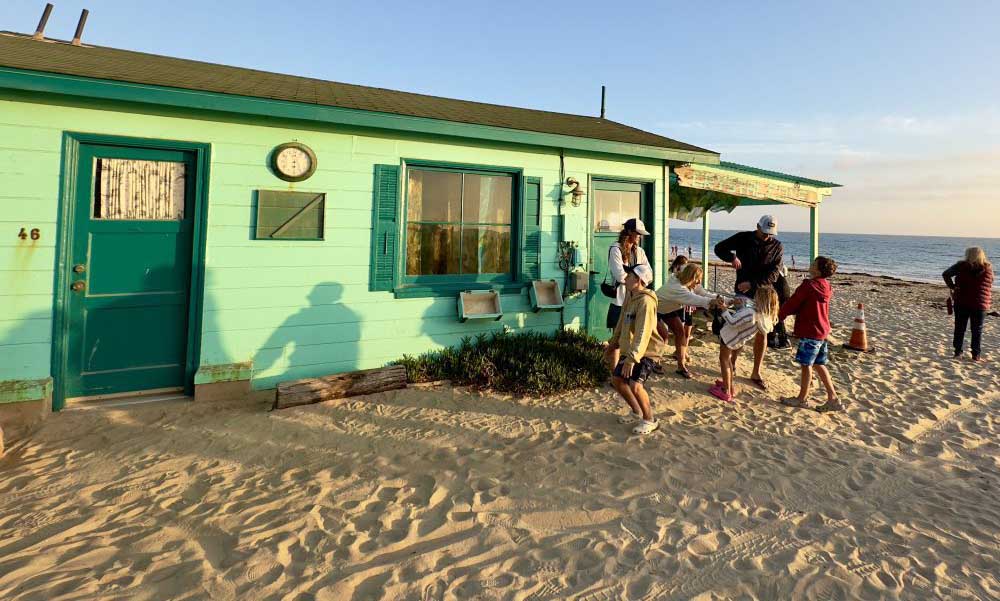Art installation plunges viewers into a kelp forest

From the moment art professors Maja Godlewska and Marek Ranis joined the Art and Action in the Pacific Ocean creative cohort, they knew they were outsiders. Organized by Cassandra Coblentz, former curator at the Orange County Museum of Art in California, the project draws together artists from the Pacific Rim whose work engages those waters. As natives of Poland and longtime Charlotte residents, the two “were really oddballs from the beginning,” said Godlewska.
But both artists have demonstrated time and again their abilities to connect deeply to a place and a cause, sometimes devoting years to research and relationship-building in faraway lands as they create work that reflects the depth of their discoveries.
Godlewska, for example, has spent stretches of time in Tasmania, on the island of Mauritius, and traveling to national parks throughout the United States, developing multiple series of large-scale paintings, mixed-media canvases, and works on paper. Ranis has more than two decades of work in the Arctic North, with residencies in Iceland, Greenland, Alaska and Norway, and a multifaceted body of artworks that consider how climate change is affecting that vast region.
So, when Coblentz approached Ranis after hearing him present at a conference about climate change and subsequently invited the two artists (they are husband and wife) to participate in “Transformative Currents: Art and Action in the Pacific Ocean,” they began by going to southern California to not only research the land and sea, but more importantly, to learn about the conservation efforts that are underway.
In research trips in 2021 and 2022, they met with scientists from the University of California Irvine and the founder of the environmental nonprofit Get Inspired. They visited the Crystal Cove State Park and learned about the Crystal Cove Conservancy and “how important it is to the local community,” said Godlewska. At a symposium at the Orange County Museum of Art, they met “incredible artists from Hawaii and New Zealand and people from indigenous tribes in southern California” who were all “stewards of the Pacific Ocean.”
And they encountered the kelp forests just off the state park’s coast. “We kind of became obsessed with the kelp,” Godlewska said. “It’s a very strange creature.”
A type of marine algae, kelp consumes carbon dioxide and produces oxygen and serves as both habitat and nourishment for a wide range of sea life. But rising water temperatures are jeopardizing the kelp forests that grow under the ocean’s surface – in some cases just 100 feet out from the California shore.
The artists’ fascination with kelp resulted in “Mare Liberum, Reimagined,” an immersive multimedia installation.
“Mare Liberum, Reimagined” is just one work in the “Transformative Currents: Art and Action in the Pacific Ocean” exhibition, which features 21 artists. But Ranis and Godlewska’s creation is not at the Oceanside Museum of Art or the Orange County Museum of Art, like the other works. Instead, “Mare Liberum, Reimagined” occupies a modest little shack that sits in the sand: historic Cottage No. 46 at Crystal Cove State Park.

Read the entire story with additional imagery on the College of Arts + Architecture website at https://coaa.charlotte.edu/2024/11/01/professors-art-installation-plunges-viewers-into-a-kelp-forest/.